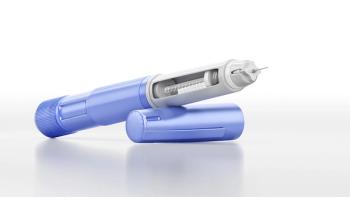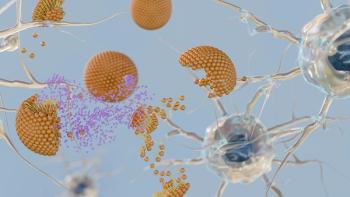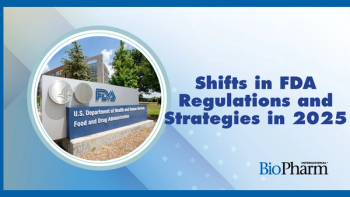
- BioPharm International September October 2025
- Volume 38
- Issue 7
- Pages: 26–34
Considerations for Quality Improvement of Cleaning, Disinfection, and Cleaning Validation in Biopharmaceutical Manufacturing, Part II. Biopharmaceutical Non-Sterile Equipment Cleaning
Key Takeaways
- Effective contamination control in biopharmaceutical manufacturing requires cleaning, disinfection, and validation to ensure product purity and patient safety.
- Cleaning agents, such as sodium hydroxide and potassium hydroxide, can reduce microbiological load but do not meet disinfection standards.
This second part of a two-part article provides a clear understanding of microbiological load reduction during cleaning processes in the non-sterile pharmaceutical manufacturing.
Abstract
This second part of a two-part article provides a clear understanding of microbiological load reduction during cleaning processes in the non-sterile pharmaceutical manufacturing. Different microbiological test methods are used to get to an outline if the cleaning process can already be seen as a microbiological risk reduction step. Finally, cleaning validation considerations using different cleaning chemistries are discussed in this paper.
Peer-reviewed
Article submitted: March 6, 2025.
Article accepted: April 10, 2025.
The capability of a biopharmaceutical manufacturer to ensure product purity and patient safety originates from a culture of learning consistency and quality improvement in understanding the foundations of a robust contamination control strategy, leading to reducing risk and providing specific and appropriate solutions.
Two substantial and common labor-intensive activities that implement contamination control in an operation are cleaning and disinfection of facility surfaces and cleaning and decontamination of product contact equipment. Equipment qualification and cleaning validation, or at least cleaning verification, are necessary add-on activities that assist in regulatory compliance and expectations of regulatory investigators. Therefore, a broad application approach for designing and ongoing evaluation of efficacy and efficiency across both equipment and facilities will influence considerations for improvements of the previously mentioned activities.
A team of subject matter experts is necessary to support risk assessment. The same type of team should support development and implementation of cleaning, disinfection, and validation of the outcomes from the latter activities.
Analysis of the outcomes from cleaning and disinfection for microbiological contamination control is performed with certain recovery methods for microbial detection. Moreover, equipment cleaning is analyzed by chemical detection methods, which in some cases can also indicate microbiological burden (e.g., total organic carbon or conductivity) but is often not easily interpreted. It is commonly assumed, though, that removal of chemical contamination often is suggestive of concomitant removal of vegetative microbial contamination.
This two-part series highlights and discusses considerations that are significant and valuable to ensuring ongoing success and improvement when applying cleaning and decontamination principles for biopharmaceutical equipment and cleanroom surfaces. Details about analysis methods are not in scope but will be briefly addressed to get to a full understanding of the investigations performed.
A biopharmaceutical perspective: sterile products
Biopharmaceuticals are commonly introduced as sterile products during clinical development (first time in human) and initial commercial dose. Bulk biological material is often manufactured as a low bioburden product prior to sterilization. Process steps downstream but prior to sterilization are low bioburden controlled. Sterile manufacturing is well understood and described, yet many biopharmaceuticals cannot withstand the conditions of terminal sterilization. The first intent manufacturing approach for the latter products is aseptic manufacturing using bacterial retentive filtration. Certain process steps have been designed with single use systems, replacing the need for routine cleaning and sterilization between batches. In cell and gene therapy manufacturing, an additional restriction can exist that is the inability to filter human cells that have been intentionally manipulated for efficacy. Containment or barrier systems have become a common manufacturing design for aseptic manufacturing to increase the assurance of removing human-sourced microbiological contaminants during the process. However, the cleanroom and facility housing a biopharmaceutical process still require adequate cleaning and decontamination in compliance with good manufacturing practices (GMPs)—such as Annex 1 in the European Union (1)—as part of a contamination control strategy.
Current practices: Biopharmaceutical non-sterile equipment cleaning
Cleaning product contact surfaces plays a significant role in the quality aspects of a pharmaceutical manufacturing operation, whether it is classical pharmaceutical manufacturing (e.g., oral solid dose form) or biopharmaceutical manufacturing using processes involving materials derived from animals or other living organisms.
To achieve effective cleaning, as outlined in ASTM 3106-22, section 8.5.5.2 (2), typically associated variables are time, temperature, cleaning agent chemistry, mechanical action, product cleanability, and amount of process residue. Often, there are discussions with quality assurance, quality control, and manufacturing specialists on the effectiveness of cleaning procedures to remove all process residues, but whether the cleaning procedure will result in a better microbiological state of the product contact surface should be considered. In some literature, it is stated that, “…sodium hydroxide (NaOH), or lye, is active against all microorganisms…” (3). The Encyclopedia of Microbiology states that “strong alkalis are used for specific microbicidal applications in industrial and laboratory settings, including virucidal activities at high concentrations. Similar to the acids, bases are useful as preservatives at low concentrations and are required to be used in higher concentrations (e.g. direct use of 0.5–2 N NaOH) for virucidal and sporicidal activity” (4).
How effective is cleaning at reducing the microbiological load in process equipment? The following identifies if different cleaning applications and agents varying in the formulation have the same effect in reducing microbiological load.
Definitions of microbiological load reduction
Table I includes the guidance documents and terminology used for reduction of microbiological load on a surface.
For clarity, a cleaning agent should not be considered a sanitizer, disinfectant, or sterilant. Cleaning products are not intended to have a biocidal effect. Nevertheless, log reduction analysis is used to identify if a defined cleaning activity might also result in a reduction of microbiological load.
Cleaning agents and commodities used for the analysis
Various cleaning solutions were used in the following analysis. The cleaning solutions were prepared using commodity raw materials like sodium hydroxide and potassium hydroxide, as well as blended detergents (COSA, Ecolab) (see Table II).
The cleaning agents used did not include any other cleaning agent supplier to this analysis, because the knowledge of ingredients in other cleaning agent suppliers’ products is limited to the authors. Therefore, accurate conclusions for the other formulations would not have been able to be prepared.
Microbiological analysis of bacteria, fungi, and yeast with blended cleaning agents
A microbiological inactivation test was used to compare the microbial load before and after the cleaning application. The testing procedure was performed according to various already existing publications (8–10) to identify the effectiveness of the chemicals against the selected microorganisms.
Generally, the tests can be described as follows:
Prepare microbial suspensions (Test organisms used: Pseudomonas aeruginosa, Escherichia coli, Staphylococcus aureus, Candida albicans, Aspergillus brasiliensis, Bacillus subtilis).
After growth promotion, 100 µL of the microbial suspension was added into 20 mL of a 2% cleaning solution at 20 °C with a contact time of 10 min and 30 min.
As a viability control, 100 µL of the microbial suspension was added into 20mL sterile saline (used to determine initial microbial concentration).
Enumeration at each time point of clean-in-place (CIP) contact, in colony forming units (CFU).
Each data point was executed in triplicate and the average calculated.
Upon cleaning agent formulation analysis, it was found that both an acidic cleaning solution and a solution containing potassium hydroxide and organic complexing agents reduced the microbiological load (Figure 1).
The reduction achieved on different species of bacteria, using the acid cleaning solutions, can be considered as equal compared with the alkaline cleaning agent (based on potassium hydroxide containing an organic complexing agent). The reduction by a standard alkaline cleaner based on sodium hydroxide containing nonionic surfactants or surfactant free is significantly lower.
A longer contact time generally showed an increased reduction of the microbial load. Therefore, a longer cleaning time might be considered if a reduction on bacteria may be beneficial for the application. As an exception, the acid cleaning solutions show the same impact against the microbiological load of Pseudomonas aeruginosa at ambient temperature independent of the contact time (10 min of contact time indicated equal results compared with 30 min).
Additional testing was performed in the same way as described above, but with microbial species of yeast and fungi (Figure 2).
The reduction achieved on yeast and fungi, using acid cleaning solutions, can be considered as equal compared with the alkaline cleaning agent (based on potassium hydroxide containing an organic complexing agent). The reduction by a standard alkaline cleaner based on sodium hydroxide containing nonionic surfactants or surfactant free is significantly lower.
The tested concentration used—2% (w/w)—for the different products follows the manufacturer’s recommendation for the single cleaning agents. Tests were carried out at ambient temperature only to identify the effect of the cleaning agents without a reduction caused by elevated temperatures (thermal disinfection).
Figure 2 indicates clearly that the cleaning process can assist in reducing microbiological load but also demonstrates that the effect is limited in these suspension tests to log reductions of 0.5 to around 4.0, depending on the microbial species.
To clearly understand the impact of cleaning solutions on reducing microbiological load and compare the requirements set for disinfection according to the biocide registration (6), additional analyses were carried out according to the relevant European test methods, such as EN1276, EN1650, and EN14476.
Microbiological analysis on bacteria, fungi, and yeast on commodity chemicals
In the pharmaceutical and biotechnology industries, the use of blended detergents is sometimes not implemented. Often, cleaning activities are still carried out using commodities/raw materials for cleaning processes. As alkaline cleaning process solutions, those containing sodium hydroxide and potassium hydroxide are used. The concentrations vary mostly between 0.1 mol/L and 0.5mol/L. To determine if a difference exists in the microbiological load reduction using an alkaline blended detergent verus commodity chemicals, the cleaning agent alkaline 2 was selected; this product showed a good impact on microbiological load during initial testing (as described earlier in this article).
The following test parameters were used:
Tests according to EN1276:2019
Pseudomonas aeruginosa, Staphylococcus aureus:
20 °C
0.3 g/L BSA (bovine serum albumen) soiling (clean conditions)
Contact time 10 min and 30 min
Tests according to EN1650:2019
Aspergillus brasiliensis
20 °C
0.3 g/L BSA soiling (clean conditions)
Contact time 10 min and 30 min.
The data in Figure 3 indicate, from the tests outlined, that the use of different cleaning solutions can assist in reducing microbiological load. It should be noted that none of the tested solutions, blended detergents, or commodity chemicals meet the necessary log reduction against the tested organisms according to the ECHA: Guidance on the Biocidal Products Regulation (BPR) (6). Thus, the log reduction is not enough to consider the cleaning solutions as disinfectants according to the BPR (6).
The blended detergent alkaline 2, containing potassium hydroxide and an organic complexing agent, shows that at a higher use concentration of 5% (w/w), an increased microbiological reduction occurs compared with a 1% (w/w) solution. The impact of the commodities solutions (2% NaOH and 2.8% KOH) can be compared to 1% solution of the blended detergent alkaline 2. The 0.5mol/L sodium hydroxide solution shows a slightly better impact on Aspergillus brasiliensis compared with the other tested solutions.
The use concentrations in this test series, according to EN1276 and EN1650, are higher compared with the initial studies discussed earlier in this article. For these higher concentrations, the contact time does not impact the microbiological load reduction as strongly as it does at lower concentrations. The impact shown is between a 3- and 4.5-log reduction in a much closer range compared with the first tests showing a range of 0.5 to 4, depending on the test organism.
Sporicidal effect of cleaning agents and commodities
Based on microbiological analysis, using the previously described suspension test, the impact against spores of the tested blended detergents (acid1, acid 2, alkaline 1, alkaline 2, and alkaline 3 each at 2% w/w) does not exceed a log 3 reduction against Bacillus subtilis spores.
The use solutions of the commodities (0.5mol/l sodium hydroxide and 0.5mol/l potassium hydroxide) tested according to EN 13704 also showed that the solutions have a very limited impact against Bacillus subtilis spores and do not exceed a log-2 reduction.
These findings lead to the conclusion that use solutions of the tested blended detergents have the same limited impact on spores compared with the commodity solutions tested.
Cleaning agents and commodities: What about virucidal activity?
EU GMP Annex 15 (11) outlines that extreme pH and/or heat can have a degradation and denaturation effect (see Annex 15 Section 10.6.1. “Therapeutic macromolecules and peptides are known to degrade and denature when exposed to pH extremes and/or heat and may become pharmacologically inactive”). Based on this expectation, the authors evaluated if the cleaning solutions of blended detergents and commodity chemicals used for cleaning in pharmaceutical and biopharmaceutical manufacturing impact virucidal activity. Note that the test on virucidal activity is not a standard requirement for a biocide according to the BPR (6).
Two virus strains were selected for the analysis of tested agent virucidal activity: The vaccinia virus (a double-stranded DNA virus), used as a reference strain for enveloped viruses (easiest to target/reduce virus load), and parvovirus, characterized by a small size (and single-stranded DNA) and representing a challenging (hardest to target/reduce virus load) non-enveloped virus strain. Due to both strains’ characteristics, the easiest and hardest virus strains to target were covered, which are listed as reference strains in official European efficacy testing norms to evaluate virucidal activity of chemical disinfectants and antiseptics.
The question of virucidal efficacy is important because the biopharmaceutical industry processes animal cells, serum, and other materials with which a viral infection can lead to issues in the subsequent manufacturing process and/or patient safety.
For the virucidal activity investigation, the test method EN14476 was followed. For this investigation, various cleaning agent use solutions and commodity materials for cleaning (sodium hydroxide and potassium hydroxide) were utilized.
For the virucidal test series, the Vaccinia virus and Minute Virus of Mice were exposed to the different use solutions. To better understand different variables, tests were performed with the different solutions at ambient temperature (20 °C) and at 60 °C.
Higher use concentrations up to 6% (w/w) were tested because the aim was to achieve extreme pH levels. The temperatures of 20 °C and 60 °C were selected based for following reasons:
20 °C. Tests at this temperature should show the influence of the tested cleaning agent solution compared with the commodity solution.
60 °C. This temperature is often used for cleaning in the pharmaceutical and biotechnological industry. The authors did not use 80 °C, as this temperature is used for thermal sanitization of medical devices (12) and may not give a clear understanding of the impacts of heat and chemistry, as it is assumed that at this high temperature, the heat effect will predominantly be evaluated. Furthermore, high temperatures may also significantly impact formulation stability, which might result in the degradation of certain components, leading to impaired microbiological efficacy.
Figure 4 demonstrates that an acidic cleaning agent can inactivate the Vaccinia virus at ambient temperature, as well as at 60 °C. For a significant effect on Minute Virus of Mice, a temperature of 60 °C is required in combination with an acidic cleaning agent.
Lower alkaline cleaning agents like the cleaner alkaline 1 and alkaline 2 show an impact on the virucidal activity only at 60 °C. Also, the Minute Virus of Mice is harder to inactivate compared with the Vaccinia virus.
Strong alkaline cleaning agents like the cleaner alkaline 3 show a similar reduction of the viral load of the tested strains compared with the commodity chemicals sodium hydroxide and potassium hydroxide. These strong alkaline solutions have an effect at ambient temperature, as well as at 60 °C. The data in Figure 4 show that the 2% sodium hydroxide solution and 2.8% potassium hydroxide solution have the same effect on the tested viruses compared with the 2% solution of the cleaner alkaline 3. The 6% cleaning solution of the blended detergent alkaline 3 shows the same impact on virus inactivation compared with the 2% solution, indicating that the detergent formulation ingredients, which enhance the cleaning effect, do not influence the effect on the tested viruses negatively and that the impact of commodities and blended detergent solutions can be rated as equal, even if the blended detergents use less alkaline material compared with the commodities.
Commodities versus blended detergents: cleaning validation
The impact on microbiological load reduction and virus inactivation is equal using blended detergents or commodity chemicals. In the pharmaceutical industry, several guidance documents describe the requirements for proper validation of a cleaning process for direct product contact surfaces. Documents like EU GMP Annex 15 (11); FDA’s inspection guide, Validation of Cleaning Processes (13); PIC/S, PI 006-3(14); and the ASTM guide 3106-22(2) outline several requirements on validated cleaning procedures and indicate related cleaning agents used. Table III outlines these requirements.
Along with the requirements given by the guidance documents outlined in Table III, the following points should be considered to perform a proper risk assessment for a cleaning agent that might be used to clean direct product contact surfaces in a pharmaceutical manufacturing operation:
- ecological and toxicological assessment available
- tested material compatibility with materials of construction and sensors in the system
- packaging size of the material; if operators handle IBC or jerrycan is better
- cleaning product suitable for the application (manual cleaning vs. CIP).
Considering the previously mentioned arguments, the cleaning validation activities can be significantly improved, transitioning from commodity-based to blended detergent-based cleaning. Also, more detailed documentation and service may be provided from a supplier.
Recap of non-sterile equipment cleaning practices
Microbiological load can be reduced using cleaning solutions, with similar results obtained with commodity raw materials or blended cleaning agent formulations. Various guidance documents outlining global requirements are available for cleaning validation activities to compare blended detergent formulation with commodities chemicals as they relate to the required cleaning validation activities.
The microbiological load reduction discussed in this section of the article cannot replace sanitization, disinfection, or sterilization processes, as these processes have a documented effectiveness using validated procedures, applications, and products. Considering the generated data in this article, it is demonstrated that none of the tested solutions, either blended detergents or commodity chemicals, will meet standard BPR (6) requirements, achieving the necessary log reductions against the different tested microorganisms. All the tests in this article demonstrate clearly that those log reduction values can’t be met.
Conclusion
This second part of the series highlights the hygienic actions required in biopharmaceutical manufacturing, starting with a discussion on a comparison of raw materials, which were used for hygiene activities compared with standard cleaning agents applied in this industry.
Cleaning and disinfection of a biopharmaceutical facility must incorporate risk assessment and considerations that are significant to ensure ongoing success and improvement during the application of cleaning and decontamination principles for biopharmaceutical equipment and cleanroom surfaces. Even with the containment or barrier systems that are becoming a common manufacturing design for aseptic manufacturing, the manufacturing space housing a biopharmaceutical process (from upstream to downstream and low bioburden to aseptic conditions) still requires adequate cleaning and decontamination in compliance with GMPs to assure patient safety and consistent product quality.
Acknowledgement
The authors wish to thank the Ecolab colleagues: Jasmin Weber, Susan Youngquist, Anna Febrero, Matthew Cokley, Andreas Krause, and Kevin Nyssen for their review, insightful comments, and suggestions.
References
1.EC. Annex 1 Manufacture of Sterile Medicinal Products. EudraLex–Volume 4 - Good Manufacturing Practice (GMP) Guidelines (EC, August 2022) (accessed Sept. 18 2024).
2. ASTM International. E3106-22 Standard Guide for Science-Based and Risk-Based Cleaning Process Development and Validation. 2022. ASTM E3106, West Conshohocken, PA (USA).
3. Durivage, M.A. The Certified Pharmaceutical GMP Professional Handbook. Second Edition, published 2016.
4. Schaechter, M. Encyclopedia of Microbiology, Third edition, 2009.
5. US Code of Federal Regulations Title 40 § 158.2203; Title 40, up to date as of 8/02/2024. Title 40 was last amended 8/02/2024; https://www.ecfr.gov/current/title-40/chapter-I/subchapter-E/part-158/subpart-W/section-158.2203 (accessed Aug. 6, 2024.
6. ECHA. Parts B+C Version 6.0. Guidance on the Biocidal Products Regulation; Volume II (ECHA, August 2023).
7. USP.<1072> Disinfectants and Antiseptics. USP 31 http://www.uspbpep.com/usp31/v31261/usp31nf26s1_c1072.asp (accessed Sept. 18, 2024).
8. Zhou, T.; Wang, L.; Zhang, Z.; Jin, M. An Enhanced Regeneration Strategy to Improve Microbial Control and Prolong Resin Lifetime for Protein A Resin in Large-Scale Monoclonal Antibody (mAb) Purification. Journal of Biotechnology 2019 289, 118–125.
9. Rogers, M.; Hiraoka-Sutow, M.; Mak, P.; Mann, F.; Lebreton, B. Development of a Rapid Sanitization Solution for Silica-Based Protein A Affinity Adsorbents. J. Chromatogr. A 2009 1216 (21), 4589–4596.
10. Burgoyne, R.F., Priest, M.C., Roche, K.L., Vella, G. “Systematic development and validation of sanitization protocols for a chromatographic system designed for biotherapeutics purification”. J. Pharm. Biomed. Anal. 1993 11 (11-12), 1317–1325.
11. EC. Annex 15 Qualification and Validation. EudraLex–Volume 4 Good Manufacturing Practice (GMP) Guidelines (EC, March 2015) (accessed Aug. 16, 2024).
12. DGKH. DGVS, AKI ; Leitlinie von DGKH, DGSV und AKI für die Validierung und Routineüberwachung maschineller Reinigungs- und thermischer Desinfektionsprozesse für Medizinprodukte und zu Grundsätzen der Geräteauswahl; 3. Auflage 2008 (accessed Aug. 16, 2024).
13. FDA. Validation of Cleaning Processes (7/93) (FDA, 1993) (accessed June 26, 2025).
14. PIC/S. PI 006-3; Recommendations on Validation Master Plan Installation and Operational Qualification Non-Sterile Process Validation Cleaning Validation (PIC/S, September 2007).
About the authors
Thomas Altmann is principal global technical consultant at Ecolab Life Sciences. Donald Singer is senior global microbiology consultant with New Beginnings Microbiology, a Fellow of the American Society for Quality, and formerly with Ecolab Life Sciences.
Stefan-Julian Frohberger is senior microbiologist at Ecolab Life Sciences.
Article details
BioPharm International®
Vol. 38, No. 7
September/October 2025
Pages: 26–34
Citation
When referring to this article, please cite it as Altmann, T.; Singer, D.; Frohberger, SJ. Considerations for Quality Improvement of Cleaning, Disinfection, and Cleaning Validation in Biopharmaceutical Manufacturing, Part II. Biopharmaceutical Non-Sterile Equipment Cleaning. BioPharm International 2025 38 (7).
Articles in this issue
3 months ago
Optimizing Testing in Cell and Gene Therapy4 months ago
New Technologies for Viral ClearanceNewsletter
Stay at the forefront of biopharmaceutical innovation—subscribe to BioPharm International for expert insights on drug development, manufacturing, compliance, and more.





